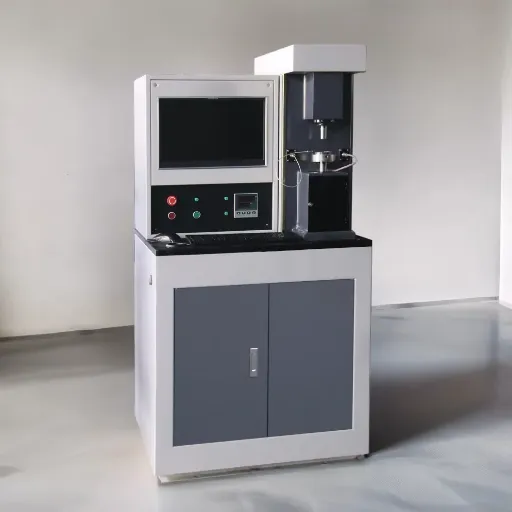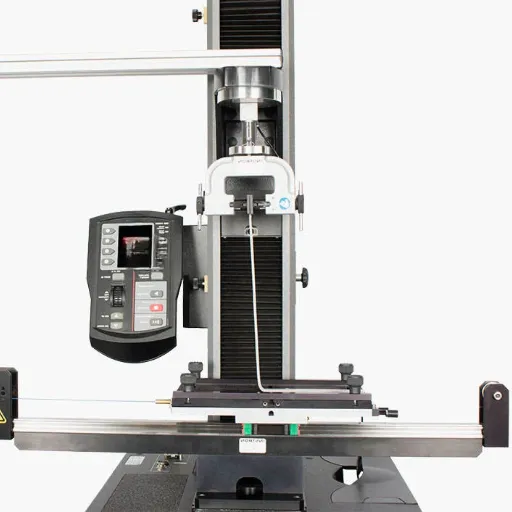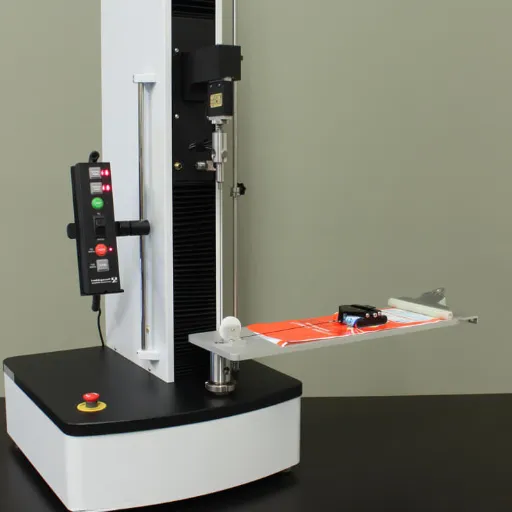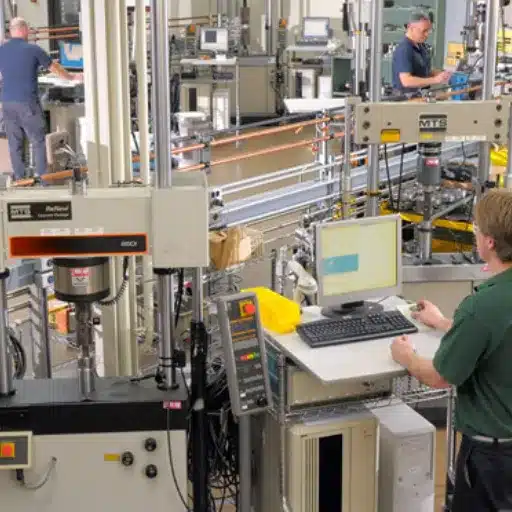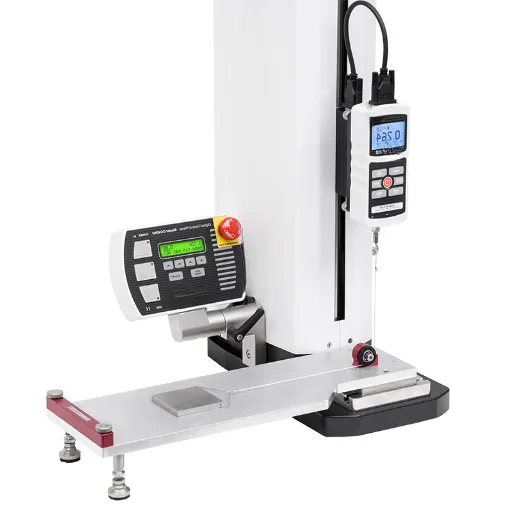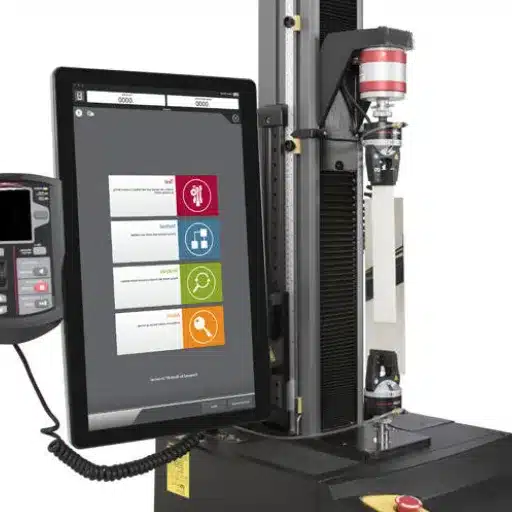Friction acts as an essential variable in the mixing of numerous applications, industrial processes, and everyday activities. Usually, it was not even given consideration or was misunderstood. The coefficient of friction is, thus, an important measure of the behavior of surfaces in their interactions under diverse conditions, and, consequently, it governs the performance of the product and safety provisions. This blog article dwells on the crux of friction testing, offering insight into the importance of the coefficient of friction and how to test it. If optimizing material performance is on your agenda or you simply wish to partake in some surface-interaction study, this guide will tether you to a perspective of tangible applications and a deeper appreciation for these invisible forces that mold the ordinary world.
Introduction to Friction Testing
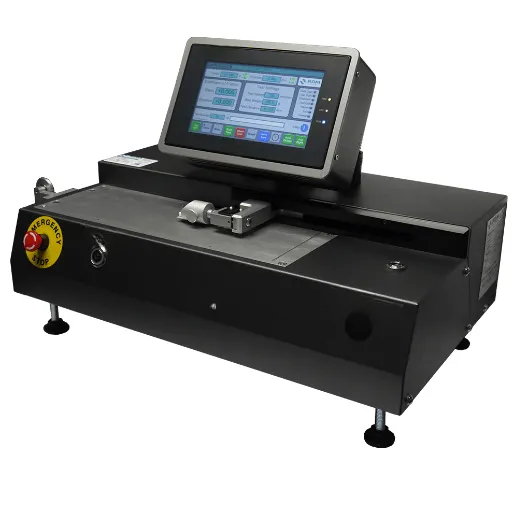
What is Friction Testing?
Friction testing is a process that measures the resistance that surfaces experience against one another while moving. Friction is nature’s way-say it is the force that governs the interactions of materials in motion. Through studying the exchange, friction testing provides insight for assessing the viability, safety, and durability of materials in different applications.
The coefficient of friction (COF) is mainly calculated by friction testing. COF is just a number to identify the frictional behavior occurring between two surfaces. It is split into two categories: static friction, measuring the force necessary to start motion, and kinetic friction, measuring the force required to keep it going. This piece of information is advantageous for merchants during manufacturing, transportation, and construction to ensure that materials work well and are reliable.
Friction testing holds great importance when designing products wherein surface properties interact with performance by, say, tires, flooring, or medical devices. The friction process utilizes equipment to test under real conditions and thereby provides data that aids the design for better safety, efficiency, and longevity. By grasping the frictional behavior, engineers and scientists make choices to improve the materials’ performance and applicability.
Importance of Coefficient of Friction
This coefficient, friction, is extremely important for any activity involving surface interaction of 2 bodies. It measures the resistance of motion offered by the 2 surfaces to each other, thereby giving an idea of the properties of slip or grip involved. Industries require this data to maintain safety, functionality, and performance of materials.
A full understanding of COF allows engineers and designers to tweak their products to meet specific needs. For instance, if an automobile tire is to be developed, COF plays a big part in assuring that such a tire has just the right amount of traction vs. wear resistance. On the other hand, for medical applications, it assists in selecting or designing devices or prostheses with specified friction characteristics that will hold up under varying conditions. That way, products can be produced to meet critical safety and performance specifications.
Wear and tear, on the other hand, are definitely affected by COF tests. Improper frictional properties of a material may cause inefficiencies and operational failures over time. Thus, through friction testing, one can evaluate the COF and take necessary action to increase the lifespan of materials and reduce cost for after-sales services; therefore, friction is an essential tool for the innovation and reliability of products.
Applications Across Industries
Friction and COF tests for various industries are imperative. In the automotive industry, friction analysis would be required in evaluating braking systems for ensuring optimum safety and performance, making sure that stopping power is always controlled with precision. The manufacturers use this information to endow their parts with reliability and good longevity that would, in turn, increase the longevity of the vehicles themselves and safety for users.
Likewise, packaging use of COF would decide those materials that can be easily handled in stacking or easy transportation of the strain. Encouragement of friction between objects ensures that they go through the shipment securely while promoting a bit of packaging on waste. This promotes operational efficiency, which is in favor of customer satisfaction as the product reaches the consumer in good condition.
Frictional force measurements are used to meet safety requirements in the medical field. Surgery instruments, prostheses, and medical tubes rely on the correct measurement of friction to operate. By enhancing the surface interactions, these instruments offer higher performance, lesser wear rate, and better patient results. Hence, friction remains a very versatile and essential tool used in many markets.
Types of Friction Tests
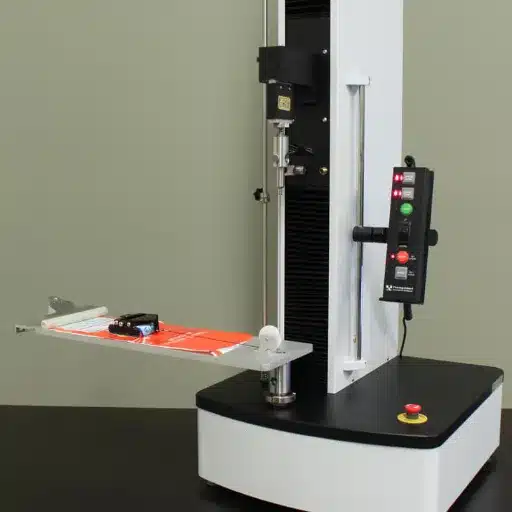
Methods of Testing-Theory-Gist
Tests of friction are used to fine the resisting force in between two surfaces in contact. The resistance offered to different materials in various applications must be understood and enhanced. The most common test methods change according to the materials being tested, the types of interaction under examination, and the conditions prevalent in the working atmosphere on the surfaces under consideration.
One such very commonly used method is the coefficient of friction (COF) test. This test measures static as well as dynamic friction while one surface is made to slide against another with set pressure and speed. The result is used in ascertaining whether the material under test would be able to serve a particular requirement, for instance, to diminish wear or to provide better stability.
A second important method is wear testing, which aims at applying repeated motions or forces to simulate a long use period. This testing is of great importance for industries such as those involved with medical devices and automobile manufacturing, where durability is a key concern. Together, these friction tests provide the basis for enhancing product safety, performance, and longevity.
Common Friction Testers and Their Uses
Several types of friction testers exist, each one targeted to simulate a particular set of conditions and procure a measurement. One of the most used testers is the tribometer, which measures friction, wear, and lubrication under certain conditions. Thus, it is used in an interdisciplinary manner, being of use in materials science and engineering where surfaces interact over space and time.
The other important friction tester is the coefficient of friction (COF) tester, which measures static and dynamic friction between surfaces. These COF testers are used in packaging, flooring, and textiles to guarantee that materials interact under conditions enforced by slip resistance laws.
Finally, there are specialized wear testing machines in existence where long-term durability and performance are of the essence. These machines repetitively simulate stress or motion for long hours, if not days, to obtain data on the longevity of a certain material. They are of utmost importance in industries such as automotive and aerospace, where a failure of the product can prove to be quite disastrous. These friction testers enable manufacturers to optimize the materials and products to perform dependably under real-world conditions.
Understanding the Universal Testing Machine
The universal testing machine is an all-purpose tool for the testing of materials under different conditions. A crucial piece of equipment in determining tensile strengths, compressive strengths, elongation, and elasticity. By applying a force, controlled by the operator, upon the material, the UTM measures the corresponding deformation of the specimen, delivering data that find use in quality control and material development.
Friction testing, another critical piece of the puzzle, evaluates resistance between two surfaces in contact. It assesses how materials perform when subjected to motion and pressure by measuring friction coefficients, wear rate, and other metrics. Outputs from such tests are essential for any industry where construction, manufacturing, or transportation use friction as a factor in safety, durability, and efficiency.
The UTM simulating real-world situations makes the materials meet certain performance criteria before their application in a practical setting. With precise results from a narrow range and repeatability, the UTM helps engineers and manufacturers develop products that uphold strength, reliability, and functionality while accepting that these materials may fail in critical situations.
Factors Affecting the Coefficient of Friction
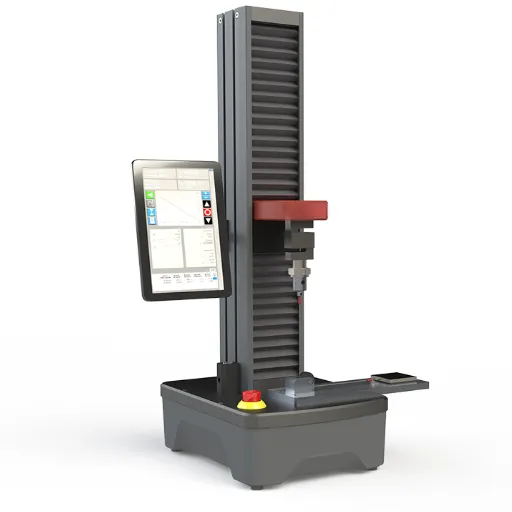
Material Properties and Their Influence
Two bodies in contact have materials interacting frictionally. Some of the factors governing friction include surface roughness, hardness, elasticity, and chemical nature of the materials. The rougher the surface and softer the materials, the higher the friction because so many points at that microscopic scale are being engaged. Conversely, hard materials tend to have a lower coefficient of friction because less deformation and wear occur. Polymers, metals, and ceramics have varying frictional characteristics influenced by microstructure, environmental conditions, temperature, and humidity.
Friction Testing and Key Data Insights
Testing friction is vital for determining COF of various materials in controlled environments. Precision measurement has since complemented the modern tribometers and friction testers. The testing devices simulate the various applications that involve sliding or rolling contact between materials. Depending on the recent studies, the COF values for common materials differ drastically:
| Material Combination | Coefficient of Friction (COF) Range | Notes |
|---|---|---|
| Steel on Steel | 0.15 – 0.6 | Depends on lubrication and surface finish |
| Rubber on Dry Surface | ~1.0 | Highest coefficient; decreases with water or oil |
| Composite Materials | 0.3 – 0.5 | Balances wear resistance with braking power |
These friction tests include testing under variable loading conditions, with different rotational speeds and lubrication types, depending on or to replicate specific conditions. Such detailed tests find use in several industries, from automotive to aerospace, confirming the performance of materials for safe, durable, and efficient use. Detailed data from these tests are necessary to design components such as tires, bearings, and seals that must perform well under pressure.
Environmental Conditions and Calibration
Friction testing is open to environmental conditions, which directly helps in the interaction of surfaces. Temperature, humidity, and pressure could actually be considered as factors responsible for the behavior of materials under a stress occasioning force. Therefore, unless these factors are governed during such a testing procedure and recorded along with the test results, the results cannot be considered legitimate or satisfactory. Extreme temperatures, for instance, may strengthen or soften or cause the degradation of the material, thus interfering with its frictional properties. In the same way, a good amount of humidity might affect the lubrication between the surfaces.
You hire calibration to make sure testing equipment performs accurately and consistently. It is a process that proves through calibration that a certain instrument, such as a force sensor or a torque measuring device, may be providing accurate readings during the given time period. Regular calibration against standardized reference benchmarks preserves measurement reliability, minimizing noise in the results. It also helps ensure recorded data meets standards for that industry, thus allowing comparison between tests and, indeed, applications.
By controlling the environment and having everything properly calibrated, valid friction testing results are reproducible. It is directly a high-precision issue in such an environment, which typically involves engineering aerospace components or automotive systems. With these at the forefront, engineers and researchers gain insight, making any presence of design decisions on this knowledge justifiable.
Surface Texture and Treatment Effects
The surface texture and treatment are of utmost importance in friction testing since they determine the interactions between two surfaces under influenced parameters. Rough or smooth surfaces are quite significant in determining contact points and, hence, the frictional behavior. Smooth surfaces mainly bear less friction because of less mechanical interlocking; however, they create higher friction levels. These differences differentiate friction and, hence, should be considered when choosing an application-based surface treatment.
Sometimes, treatments are applied to a surface in order to optimize its attributes; these can be coatings or heat treatments. For example, coatings might be used to reduce wear, increase durability, or produce special friction coefficients depending on the material type and working environment. Through heat treatment, the microstructure may be altered to increase hardness and resistance to deformation, thus affecting frictional behavior significantly. Right surface treatments create control over friction, wear, and performance.
During the process of friction testing, every combined effect of the surface texture and its treatment must be borne in mind so that the outputs may be correct and reliable. This way, an engineer can predict the performance based on the data obtained under certain controlled conditions, analyze the possible problems that may arise, and initiate remedial measures on the components to enable their optimum functioning. Such focused approach not only instills some precision into testing but also assists in the advancements of Material Engineering and Design for better performance in various industries.
Conducting a Coefficient of Friction Test
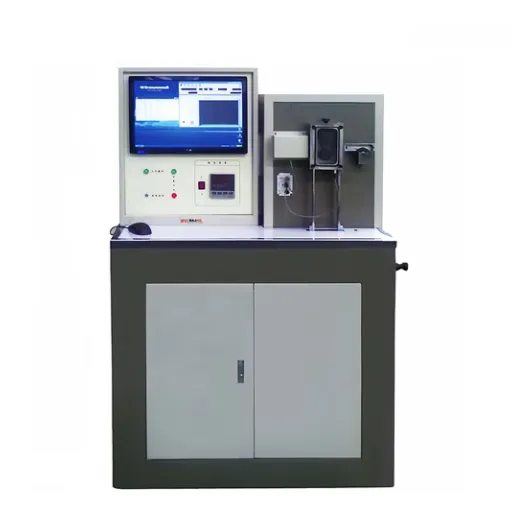
Preparation and Setup of Testing Machine
Before conducting a coefficient of friction (COF) test, it is necessary to set up the testing machine properly in order to ensure operations run smoothly and the results are verifiable. First, select the testing machine and accessories appropriate for the type of test applied; for instance, friction testing platforms, sensors, and load cells. A usual COF test machine comprises a stationary surface and an actuating sled or sample holder, which imparts relative motion between the contacting surfaces. The subsequent are the preparation procedures:
- Calibrating the Equipment: To guarantee accuracy in measurement and remove deviations caused by the sensor, it is imperative that the testing machine be calibrated to the relevant industrial standards (e.g., ASTM D1894, ISO 8295).
- Cleaning of Contact Surfaces: Both the moving and stationary surfaces should be carefully cleaned of dust, grease, or other residual matter that may affect test results. Use a cleaning agent that will not chemically alter the surfaces.
- Test Sample Preparation: Cut test samples to the dimensions specified in the testing protocol. Ensure that the surfaces are uniform and accurately represent the material properties under investigation.
- Adjusting Testing Conditions: Set the environmental conditions (temperature, humidity, etc.) required in the testing, should it be made to reproduce operational conditions. Something as simple as temperature can affect the behavior of some materials.
- Mounting Samples: Fix the test sample onto the moving sled or onto the stationary surface. Any slipping or misalignment may cause errors in measuring the coefficient of friction.
- Software Configuration: Input the required test parameters, for example, sliding speed, applied force, test duration, in the machine’s control software. Modern COF testing systems allow test settings to be customized for better precision.
Step-by-Step Testing Procedures
- Calibration: Before commencing the test, always calibrate the COF testing apparatus. It is advisable to calibrate the load cell and sensors as per the manufacturer’s instructions to promote accurate and uniform measurements.
- Prepare the Test Surface and Sample: Clean the test sample together with the cleaner contact surface to remove any dust or debris that may affect the outcome of the test. Clean surfaces aid in eliminating external variables that might affect the coefficient of friction measurements, thus increasing accuracy.
- Set the Test Parameters: Input the predetermined test parameters into the control software, e.g., speed of sliding, applied force, and time duration of test. Check these parameters once again to ensure they conform to the requirements of the material under test and what the experiment intends to achieve.
- Perform the Test: Initiate the COF test and perform real-time observation of the process for any anomalies. The system will determine how much force needs to be applied to slide one surface over another, which is then used to determine the coefficient of friction.
- Analyze Results: After completing the test, analyze the data provided by the system. Results usually include static and dynamic coefficients of friction. Make sure the data fulfills the criteria for which you tested and note any irregularities to come back to at a later time for more detailed study.
- Document Findings: Write down all the results in a certain manner, including all pertinent parameters and observations. Describing the results clearly will provide excellent opportunities for further analysis or to use them again in a test replication.
Data Collection and Analysis
To perform friction testing, it is necessary to obtain accurate and reliable data regarding the resistance between two interacting surfaces. Test sampling is necessary, with temperature and humidity controlled to ensure an equivalent environment. The force, velocity, surface condition, and material should all be accounted for in exact terms so as never to be questioned against the manufacturer’s explanation of the test or against the test itself.
The procedure involved measuring the coefficients of friction, static and dynamic. The coefficient of static friction stands for initial resistance to motion, while the coefficient of dynamic friction measures resistance to motion once movement has commenced. Any peculiarities of the data must be taken into consideration as such peculiarities might point toward an external influence, e.g., an irregularity in the surface or such contamination in the atmosphere.
The tests were completed, and the results were entered systematically. These may include the coefficients of friction, test conditions, and certain observations. Clear documentation makes it easier to analyze patterns or trends and to compare materials or conditions. These results serve as a basis for further investigation or reapplication of the test procedures in follow-up investigations.
Challenges in Friction Testing
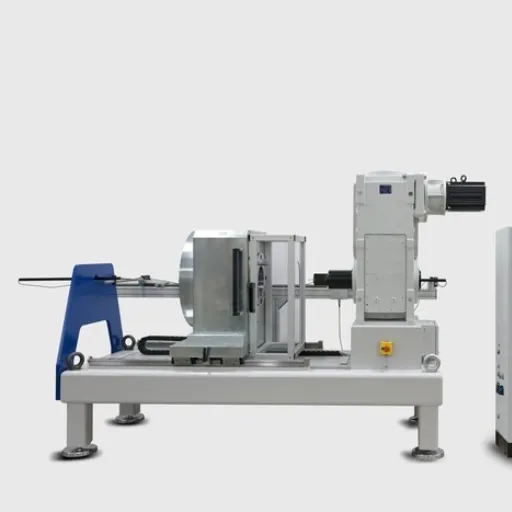
Common Issues Faced by Professionals
Professionals involved in friction testing often suffer variability in test results due to the action of uncontrollable external agents. Such external agents may bring change in temperature, humidity, or even contamination of the testing surfaces, thereby changing the coefficients of friction and hence can be detrimental to the reliability of the data. Whenever possible, it is important to ensure a controlled environment; yet, the nature of some field testing scenarios makes this impossible.
Wear and tear of test apparatuses is another common challenge faced. Through repeated use, these instruments and sensors used for friction testing can lose calibration, precision, measurement, etc., thereby yielding effective results that are inconsistent. Partnership testing for such instruments in maintenance, calibration, and replacement may only lead to the enhancement of the credibility of the results, but a lot of these activities will consume time and even some resources.
Finally, recreating real-world conditions in testing can pose substantial challenges. Basically, multiple friction applications are enormous in dynamic and complicated environments, such as automotive braking systems or industrial machinery, where multiple variables interact. Simulating such conditions in a controlled environment often entails special systems and processes for testing, which in turn are not always available, thus imposing another difficulty on the professional.
Ensuring Data Consistency in Friction Testing
Data consistency in friction testing requires that uniform and reliable data be generated through multiple tests and varying operative conditions. To this end, it is essential to employ standardized procedures and precise instrumentation to minimize uncertainties. Properly calibrated equipment and controlled environmental conditions lead to consistent outcomes, thus enabling them to be compared effectively and the tests to be repeated.
More significantly, the samples must be prepared properly and carefully handled. Test specimens should be prepared consistently, and factors potentially contributing to inconsistency in data, such as variations in material properties of reacting samples or surface finishes, should be taken into consideration and addressed accordingly. By monitoring such variables, the actual reliability of data during friction testing will be greatly enhanced.
Finally, good documentation really affects consistency in data. If everything about a test procedure, the conditions set upon it, and its parameters is well documented, then it becomes possible for engineers and researchers alike to isolate areas where errors could be introduced and to thus guarantee the integrity of the results. In that manner, friction tests will produce trustworthy data and will be truly reproducible in even complicated cases, given an orderly approach used in all of the steps of data collection and analysis.
Best Practices for Equipment Calibration
Calibrating equipment accurately is a very important step that must be taken in order for the testing or measurement results to be consistent and reliable. First, it is best to adhere to the manufacturer’s suggested calibration schedule. This maintains the accuracy of instruments and may prevent inaccuracies due to wear, weather effects, or environmental considerations. Documentation of calibration hours is very important, including dates, procedures, and adjustments made, if any, for future reference in tests.
Standards used for calibrating should always be admissible reference materials traceable to a recognized standard in identified laboratories, preferably accredited ones. Traceability implies that measurements align with national or international standards, leading to more credible results. Before calibrating, ensure the test environment is good: temperature, humidity, or vibrations interfere with the accuracy of sensitive equipment.
Meanwhile, regular training for calibration personnel ensures they understand the proper procedures and can recognize potential issues. If things go wrong during calibration, errors can multiply as time passes. Once the necessary scheduling and standards are set up, the equipment must be regularly calibrated by an efficient person. This alone guarantees that the instrument maintains its accuracy and reliability, thus providing the required valid and reproducible results for the given project or research.
Frequently Asked Questions (FAQ)
Q: What is friction testing?
A: Essentially, friction testing measures the resistance of two surfaces during their interactions with each other. This resistance, known as friction, can be measured in numerous ways to gain insights about material performance and their behavior in different cases or conditions.
Q: How is the coefficient of friction calculated?
A: One obtains the coefficient of friction by dividing the amount of force generated by friction by the normal force exerted on two surfaces pressing each other. This is a dimensionless quantity, representing a level of friction for given materials; static friction is normally greater than kinetic friction, since static friction is the force needed to get something moving.
Q: What kinds of friction are tested?
A: The principal forces of friction tested are static and kinetic. Static friction is the force resisting the motion of already stationary objects. Kinetic friction, on the other hand, is a force resisting motion between two surfaces already moving against each other. Every kind has its coefficient; static friction generally has a lower coefficient than kinetic friction which opposes the motion of a sled in friction testing.
Q: What sort of apparatus is used for friction testing?
A: Mainly, a friction testing machine is used to check the friction of plastic materials, of pavements, and of other various surfaces. The machine applies a normal force with great control and then measures the friction force to find out the friction coefficient.
Q: Why is friction testing important for road maintenance?
A: Friction testing measures pavement friction-the very essence of road safety. The surfaces must be maintained for the safe passage of vehicles in regular weather conditions, more so during adverse weather conditions, by testing the friction features of road surfaces.
Q: What is the effect of normal force in friction testing?
A: Constituents of normal force in friction testing include the weight of the sled or testing apparatus pressed down on surfaces. Such friction is proportional to the normal force; therefore, if one wishes to calculate an accurate coefficient of friction, it must be taken into account.
Q: What are the effects of plastic films on friction testing?
A: Plastic films and sheetings may influence friction testing results because of the properties involved. Plastic friction varies extensively; depending on its nature, it may impact both static and kinetic friction coefficients and is important in applications where low friction is desired.
Q: What is the standard for friction testing?
A: A wide variety of standards are in use for friction testing, all to have reliable and comparable results. These standards specify methods and equipment, and conditions for performing the tests, allowing for reliable comparisons between a wide range of materials.
Q: Does the direction of motion affect friction testing?
A: The direction of motion might affect results, especially in dynamic testing. Different orientations could give different friction coefficients because the force required to move the sled could vary with surface texture and the angle at which the force is applied.
Q: What causes high or low friction?
A: Higher or lower friction arises from greater or lesser roughness of the surfaces, from differences in properties of materials, or from the presence of moisture or other contaminants. Research in these variables will enable engineers and material scientists to either increase surface treatment for higher friction or reduce it for lower friction.
References
-
Coefficient of Friction Testing: Procedure, Application, and Methods – This resource provides an overview of various friction testing methods, including pin-on-disk and flat-on-flat tests.
-
Guide to Coefficient of Friction Testing – A detailed guide on friction testing equipment and its applications in industries like packaging.
-
An Experimental Study on the Frictional Behavior – A scientific study focusing on high-temperature friction testing of ultrathin metal sheets.
-
FEM Simulation of Friction Testing Method – A research article discussing a new friction testing method for evaluating lubricant characteristics.
-
Best 10 Friction Testing Machine Options for Runway Use – A practical guide to friction testing machines designed for runway surface safety and reliability.

